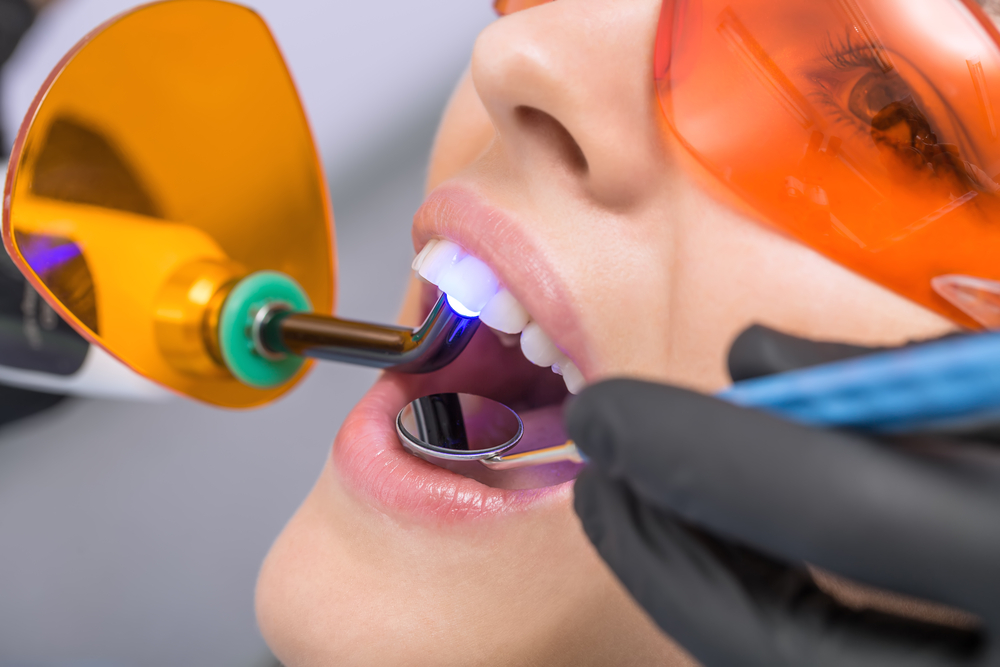Dental Bonding

At Glen Ellyn Dentistry, we provide a variety of restorative and cosmetic dentistry treatment options to help our patients achieve their oral health and smile goals. Dental bonding is a versatile treatment option with both cosmetic and restorative applications, offering a variety of benefits to patients. We welcome you to learn more and discuss whether dental bonding might be the right treatment option for you.
What Is Dental Bonding?
Dental bonding is a quick, simple, and non-invasive treatment option that can be used to improve the look of your teeth and benefit your oral health. Bonding is made from tooth-colored composite resin (a type of plastic). It is applied to a tooth, shaped, molded, and contoured before being set with a special ultraviolet curing light.
Other common names for dental bonding include teeth bonding, tooth bonding, composite bonding, and resin bonding.
What Concerns Can Dental Bonding Address?
Dental bonding offers a variety of cosmetic and restorative applications. It can be used to:
- Seal and restore a chipped, broken, cracked, or otherwise damaged tooth
- Cover permanent stains or discoloration
- Fill in tooth gaps
- Correct the appearance of an irregularly sized or shaped tooth
- Provide relief from tooth sensitivity
- Fill cavities and seal areas of tooth decay to protect a tooth from further damage
- Improve the balance or symmetry of a smile
Are There Different Types of Dental Bonding?
There are two different types of dental bonding. While the bonding itself is made of the same composite resin, the application procedures differ slightly.
Direct Composite Bonding
Direct composite bonding requires no preparation and is simply applied to a clean and dry tooth enamel surface before being sculpted and cured.
Adhesive Bonding
The adhesive bonding procedure is slightly more complex than direct composite bonding, as it involves more preparation and the application of an adhesive. With adhesive bonding, the treatment area is first prepared with an etching product that creates a rougher surface to facilitate a stronger bond. An adhesive is applied beneath the composite resin dental bonding material before the bonding is sculpted and cured.
Adhesive bonding is more commonly used in procedures where dental bonding is applied for restorative purposes.
What To Expect When Getting Dental Bonding
Dental bonding is a quick, painless, and non-invasive procedure that requires little (if any) preparation of the treatment area. As stated above, the treatment steps and preparation vary depending on the type of dental bonding applied.
Once the composite resin has been applied to the tooth, the dentist sculpts, molds, and contours it into the desired shape and appearance. We then shine a special ultraviolet light on the dental bonding material to cure, set, and harden it within minutes.
Is Dental Bonding Right for You?
This versatile treatment option has a variety of applications in both cosmetic and restorative dentistry. Whether you want to correct an imperfection in your smile’s appearance, try out a new look before committing to permanent dental veneers, or restore a damaged tooth, dental bonding could be the right treatment option.
We are happy to talk with our patients about dental bonding, its applications, and our comprehensive list of restorative and cosmetic dentistry services. To request a dental bonding consultation, we welcome you to contact Glen Ellyn Dentistry at 630-942-0727 today.


